The future of Shakespeare in modern theatre lies in digital performances, diverse cultural adaptations, and innovative reinterpretations of his works. Directors continue to bring fresh perspectives to his plays, ensuring that Shakespeare’s themes remain relevant while embracing new technology and creative storytelling methods.
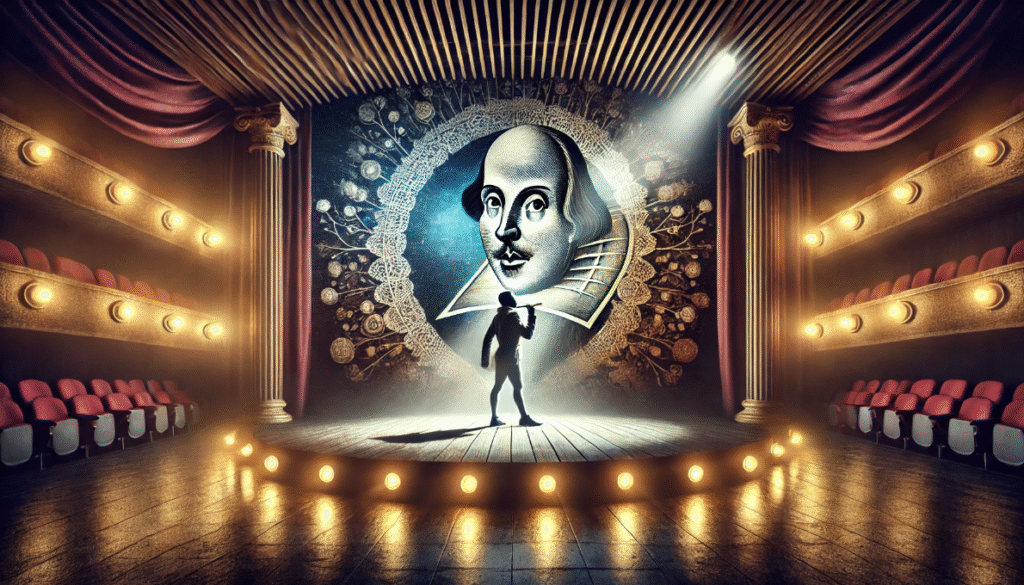
The Transformation of Theatre Due to Shakespeare: How His Influence Shaped Modern Drama and Performance
Imagine a world where theatre is just a simple pastime with no depth, no complex characters, and no real emotional engagement. Sounds unthinkable, right? Well, this was the state of theatre before William Shakespeare stepped onto the stage. The transformation of theatre due to Shakespeare is nothing short of revolutionary. His groundbreaking contributions didn’t just reshape the way stories were told—they changed the very foundation of modern drama and performance.
In this article, we’ll explore how Shakespeare’s inventive approach to character development, storytelling, and language set the stage for today’s complex and dynamic theatrical experiences. Whether you’re an aspiring playwright, actor, or theatre enthusiast, understanding this transformation can deepen your appreciation of modern drama and help you see how Shakespeare’s influence continues to resonate in contemporary performances. 🌟
Table of Contents
ToggleI. Shakespeare’s Profound Impact on Theatre 🎭
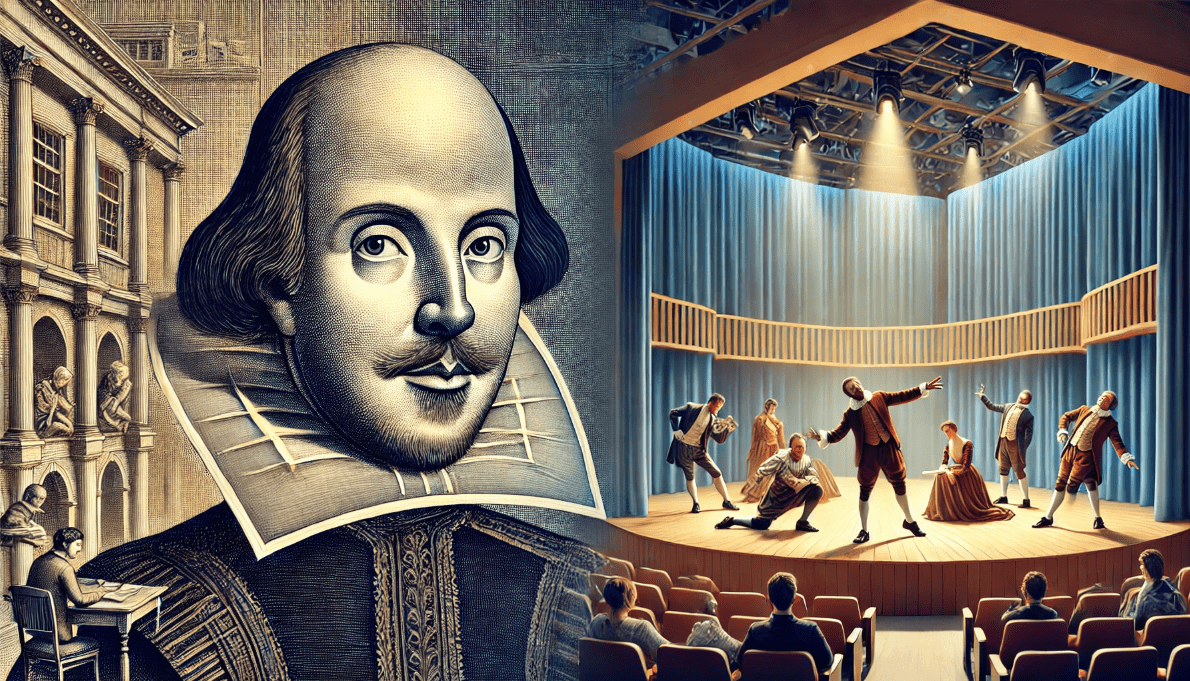
William Shakespeare’s impact on theatre is immeasurable. Before his time, theatre was often simplistic, with characters and plots that followed predictable patterns. Shakespeare changed that forever by adding complexity, emotional depth, and universal themes. His works not only entertained but also made audiences think deeply about human nature and society. 🌟
Shakespeare’s plays introduced intricate characters, from the tortured Hamlet to the ambitious Macbeth. These characters weren’t just good or evil—they were multifaceted, with inner conflicts that made them relatable to audiences across generations. His mastery of language, filled with vivid imagery and clever wordplay, enriched the English language, creating phrases we still use today. 📝
But it wasn’t just about the words. Shakespeare also revolutionized the structure of plays. He blended tragedy, comedy, and history, making each genre more layered and dynamic. His innovative use of soliloquies allowed characters to express their deepest thoughts, adding layers of intimacy and connection with the audience.
Ultimately, Shakespeare transformed theatre by introducing complexity and authenticity into both storytelling and performance, setting the stage for everything that followed. Whether on stage or screen, his influence remains strong, shaping modern drama and performance in ways that continue to captivate and inspire. 🎬
II. The State of Theatre Before Shakespeare 🎭
Before Shakespeare, theatre was quite different from what we know today. In the late 16th century, the stage was dominated by simple plots, stock characters, and predictable structures. Drama was primarily a form of public entertainment, and its purpose was often to teach a moral lesson or provide lighthearted amusement.
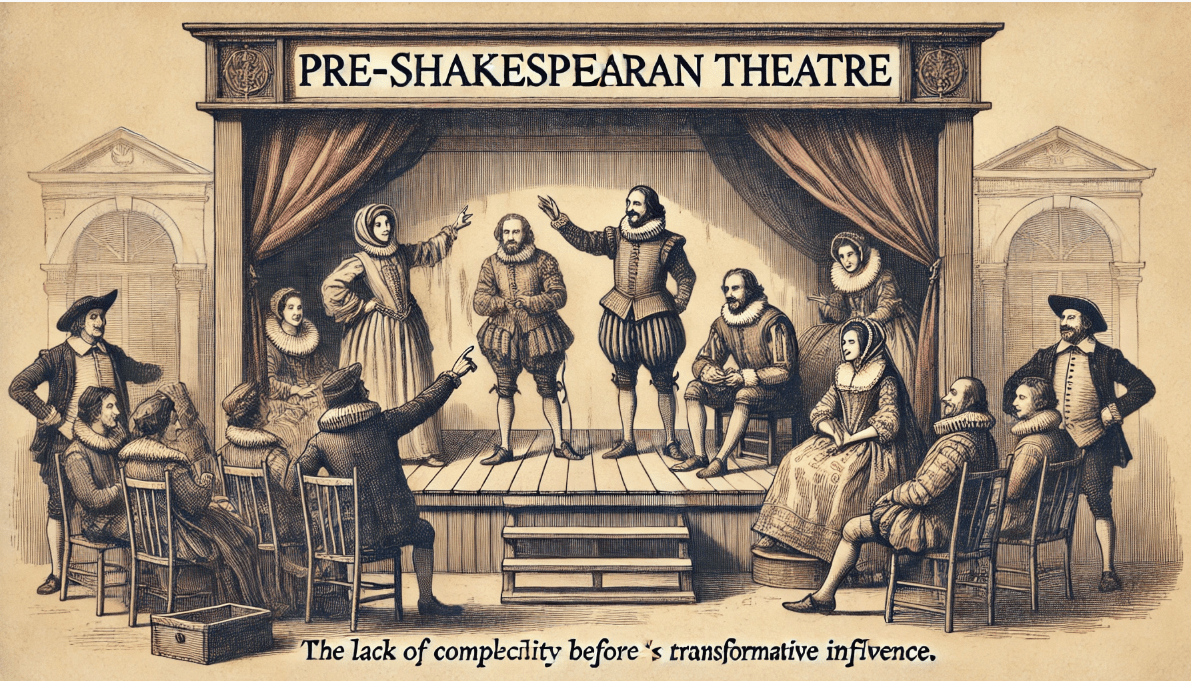
- Simplistic Storylines
Early plays mostly followed straightforward narratives. The characters were often either clearly good or bad, and their actions were easy to predict. There wasn’t much room for the kind of complex, layered storytelling we see today. - Lack of Emotional Depth
Characters in pre-Shakespearean theatre were not typically explored with the depth and nuance we’re familiar with now. Instead of grappling with internal conflict or moral dilemmas, characters were mostly vehicles to deliver the plot. Their motivations were often one-dimensional, which meant there was little emotional connection with the audience. - Limited Theatrical Styles
Plays of the time typically stuck to one genre: comedy, tragedy, or morality plays. While each genre had its value, there wasn’t much blending of styles. A tragedy was expected to follow a predictable arc, while comedies often had happy endings but lacked the complexity of modern comedic forms. - Focus on Physicality Over Language
The emphasis in early theatre was more on physicality and spectacle—actors would rely on gestures, exaggerated movements, and visual tricks to convey the story. The language used was often less sophisticated than what Shakespeare would later introduce.
In short, theatre before Shakespeare lacked the depth and emotional complexity that would later define the stage. Shakespeare’s genius lay in taking these basic elements and transforming them into something far richer, more layered, and more connected to human nature. 🎬
III. Shakespeare’s Innovative Contributions to Theatre 🎭✨
Shakespeare didn’t just write plays—he transformed the very nature of theatre. His innovative contributions laid the foundation for modern drama and performance, influencing everything from character development to plot structure. Here are the key ways he reshaped theatre:
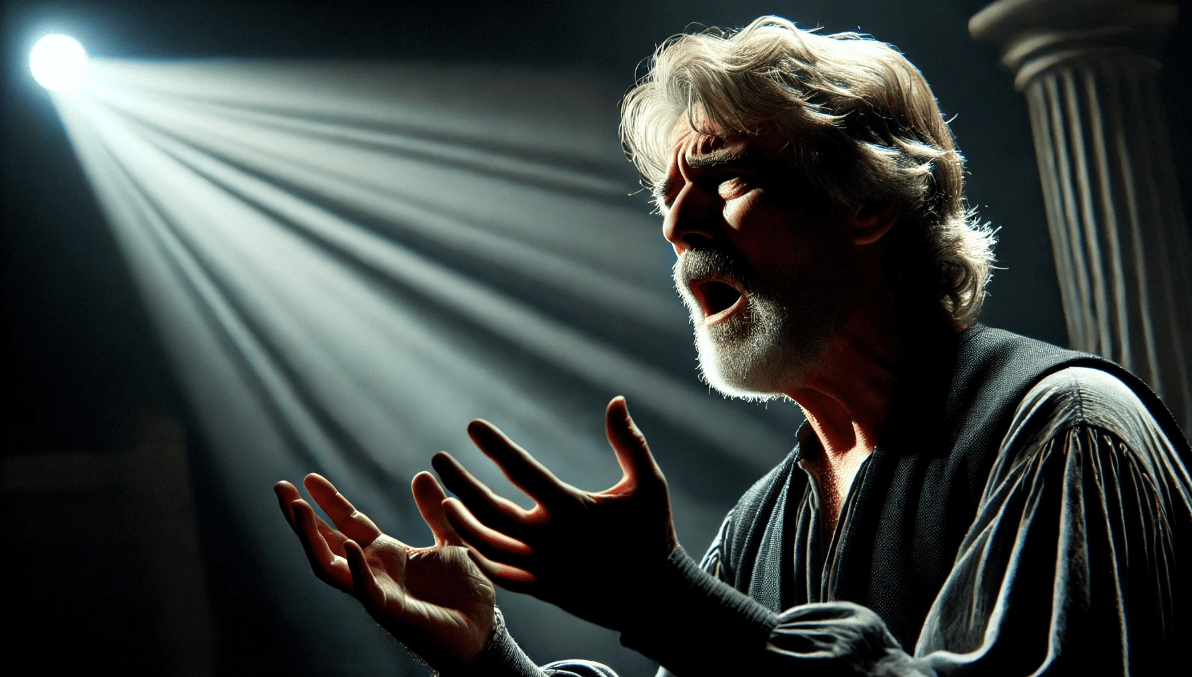
1. Complex Characters and Psychological Depth
Before Shakespeare, characters were often stereotypical—heroes were virtuous, villains were evil. Shakespeare broke these boundaries by creating multi-dimensional characters with internal struggles and conflicting emotions. Think of Hamlet, torn between action and indecision, or Lady Macbeth, driven by ambition but consumed by guilt. This psychological depth made characters more relatable and gave actors the opportunity to explore a wider range of emotions and motivations. 😌
2. Layered Plots and Themes
Shakespeare’s plots were no longer simple. He weaved multiple storylines and subplots into one play, which made the narrative more engaging and reflective of real life. In King Lear, for example, the main story of power and betrayal is complemented by the subplot of the Fool and the themes of madness and family dynamics. His ability to combine humor, tragedy, and drama into a single play influenced how stories are told today, in both theatre and film. 🎥
3. The Power of Language
Shakespeare’s use of language was revolutionary. He didn’t just write dialogue—he crafted powerful speeches, soliloquies, and poetry that gave his characters voices that felt alive. His famous soliloquy “To be, or not to be” in Hamlet captures the essence of human existential questioning. Shakespeare’s wordplay, metaphors, and ability to express universal themes made his works timeless. Fun fact: Shakespeare is credited with coining many words and phrases that are still in use today! 📚
4. Breaking Dramatic Conventions
Shakespeare didn’t play by the rules. He experimented with structure and genre, blending elements of comedy and tragedy in ways that were unheard of. A Midsummer Night’s Dream, for instance, mixes romance, comedy, and fantasy, while Macbeth uses elements of horror within a tragedy. He also introduced the use of soliloquies, where characters speak directly to the audience, creating a sense of intimacy and insight into their thoughts. This breaking of dramatic conventions opened up endless possibilities for playwrights after him. 🎬
Shakespeare’s contributions didn’t just improve theatre—they transformed it into a medium capable of exploring the full spectrum of human experience. His innovation in character depth, language, and plot structure made his works timeless, inspiring playwrights, directors, and actors for centuries. 🌟
VI. The Rise of Shakespeare Adaptations in Modern Theatre 🎭🎬
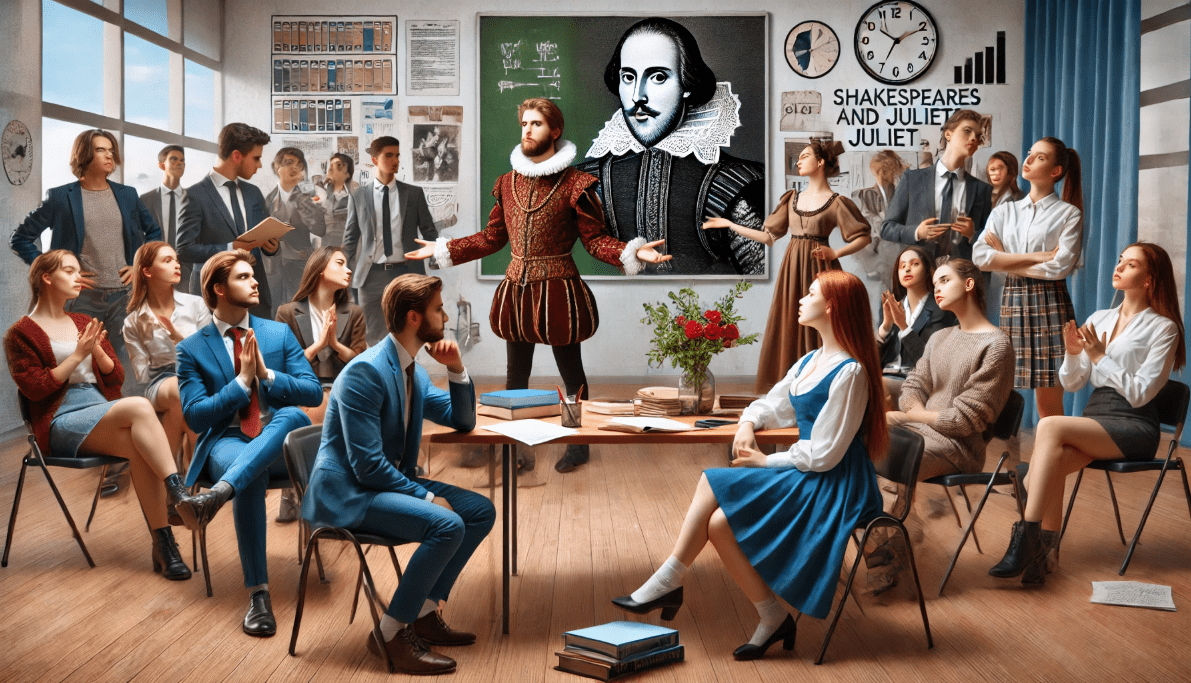
Shakespeare’s plays aren’t just for history books or academic study—they live on today in countless adaptations across different mediums. The rise of Shakespeare adaptations in modern theatre showcases how his works continue to resonate with audiences, offering fresh perspectives while staying true to his core themes. Here’s how these adaptations are keeping his legacy alive:
1. Shakespeare in Popular Culture
One of the most exciting aspects of Shakespeare’s influence is how his stories are reimagined for modern audiences. Movies, TV shows, and stage productions have all given new life to his works, often updating the setting or language to make them more accessible. For example, 10 Things I Hate About You is a modern reimagining of The Taming of the Shrew, and The Lion King draws inspiration from Hamlet, blending Shakespeare’s themes with vibrant, contemporary storytelling. These adaptations make Shakespeare’s complex themes relatable to today’s generation. 🌍
2. Global Reach of Shakespeare
Shakespeare’s works are not confined to the English-speaking world. Around the globe, directors and playwrights adapt his plays to reflect diverse cultures and social contexts. For example, in Bollywood, Shakespeare’s tragedies like Macbeth and Romeo and Juliet have been transformed into films that resonate with Indian audiences. From Japan to Brazil, Shakespeare’s plays have been adapted to reflect local traditions, making his stories universal while also deeply rooted in specific cultures. 🌏
3. Shakespeare Festivals and Modern Productions
Shakespeare festivals around the world are thriving, with thousands of performances taking place annually. These festivals not only celebrate Shakespeare’s original works but also encourage new interpretations. Directors often choose to set his plays in modern contexts, like a corporate boardroom for Macbeth or a 21st-century high school for Romeo and Juliet, to demonstrate how his themes of ambition, love, and conflict are still relevant today. Productions like these highlight the continued power of Shakespeare’s works to adapt and evolve. 🎭✨
4. Reimagining Shakespeare for the Digital Age
With the rise of digital theatre, Shakespeare’s works are being transformed into virtual performances, making his plays accessible to global audiences with just a click. Companies are streaming live performances online, creating interactive experiences, and even reinterpreting his works using digital effects and animation. This digital revolution ensures that Shakespeare’s voice continues to echo, reaching a new generation of theatre lovers who may never have attended a live performance. 📱
Shakespeare’s plays are no longer confined to the past—they are continually being reinterpreted and adapted in ways that speak to modern sensibilities. Whether through film, festivals, or digital experiences, these adaptations allow audiences to engage with Shakespeare in new, exciting ways. The rise of these adaptations ensures that his influence will remain strong for generations to come. 🌟
VII. The Future of Shakespeare in Theatre and Performance 🎭🚀
Shakespeare’s works have already endured for over 400 years, but what does the future hold for his legacy in theatre and performance? As we move into the digital age and embrace more diverse voices, Shakespeare’s influence continues to evolve and adapt. Here’s how his impact will shape the future of theatre:
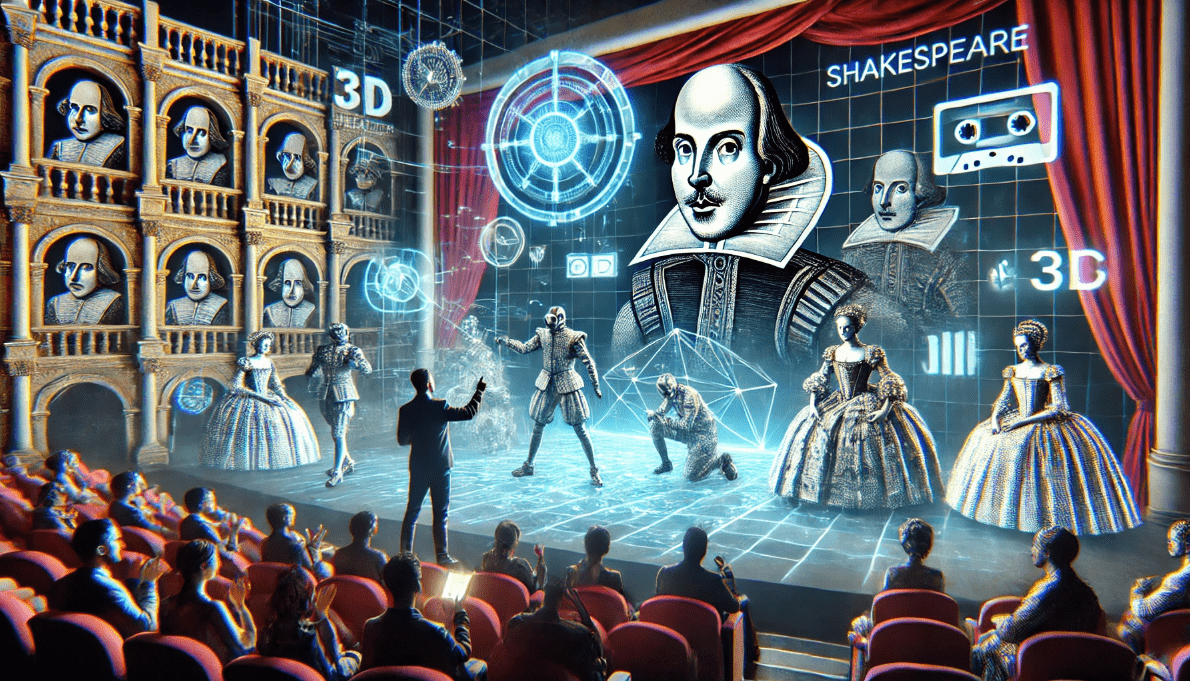
1. Shakespeare in the Digital Age 🌐
The digital revolution is transforming theatre in exciting ways. With virtual performances, live-streamed plays, and digital adaptations, Shakespeare’s works are now accessible to a global audience at the touch of a button. Interactive experiences, like virtual reality performances or digital theater apps, will allow audiences to experience Shakespeare’s plays in new, immersive ways. As technology continues to advance, Shakespeare’s stories will likely be reimagined using cutting-edge visual effects, making his works even more engaging for a tech-savvy audience.
2. Shakespeare and Diverse Perspectives 🌍
One of the most exciting trends is the increasing diversity in Shakespearean productions. Modern directors and playwrights are exploring new cultural contexts and perspectives in their adaptations. For instance, placing The Tempest in a post-colonial setting or casting a diverse range of actors in traditionally white roles allows Shakespeare’s works to reflect today’s global and multicultural society. This not only broadens the appeal of his plays but also deepens the relevance of his themes of power, identity, and justice.
3. Engaging Younger Audiences 👶🎉
The future of Shakespeare in theatre also depends on attracting younger generations. To do this, modern adaptations often use contemporary language, music, and settings, making Shakespeare’s works more relatable and engaging. Productions aimed at younger audiences, such as Shakespeare in the Park or educational theatre programs, continue to adapt his timeless stories to be more approachable while still preserving his genius. Social media also plays a role, with viral Shakespearean quotes, memes, and even TikTok videos helping to keep his legacy alive among younger fans.
4. Shakespeare’s Influence on Contemporary Playwriting ✍️
Shakespeare’s influence won’t just be seen in direct adaptations but in the work of contemporary playwrights. Modern writers continue to draw from his mastery of complex characters, multi-layered plots, and rich language. Expect to see more playwrights experimenting with Shakespearean themes—whether they’re exploring political corruption like in Julius Caesar or the complexities of love and rivalry seen in Romeo and Juliet. Shakespeare’s style has become a blueprint for crafting meaningful, thought-provoking drama that speaks to both timeless and modern issues.
5. New Shakespearean Theatre Forms 🎤
In the future, we may also see the rise of new theatre formats influenced by Shakespeare’s blending of genres. From musical adaptations to spoken word performances, Shakespeare’s ability to merge different forms of storytelling will continue to inspire experimental theatre. The fusion of Shakespeare’s narratives with other art forms, such as hip hop, ballet, and digital media, will allow his plays to be experienced in innovative and exciting ways.
Shakespeare’s future in theatre is bright. As the world continues to change, so too will the ways we experience his works. From virtual reality performances to more inclusive, diverse interpretations, the future promises a dynamic and evolving legacy that keeps Shakespeare relevant for generations to come. 🌟
Shakespeare’s Enduring Legacy in Theatre 🎭✨
Shakespeare’s impact on theatre is undeniable, and his transformative influence continues to shape modern drama and performance in profound ways. From his complex characters and intricate plots to his innovative use of language, Shakespeare revolutionized the way stories were told on stage. His works provided a blueprint for contemporary playwrights and actors, offering timeless themes and characters that resonate with audiences worldwide.
As we’ve seen, Shakespeare’s legacy doesn’t end with his original works. His plays are constantly being adapted, reimagined, and reinterpreted to reflect the evolving world around us. Whether through modern adaptations, digital performances, or diverse cultural interpretations, Shakespeare’s influence remains alive and relevant. 🌍
As we move forward, the future of Shakespeare in theatre is bright. With new technologies, fresh perspectives, and innovative artistic forms, his works will continue to inspire creativity and spark conversations for generations to come. So, whether you’re a theatre lover, an aspiring actor, or a curious reader, there’s no better time to dive into Shakespeare’s world and explore how his genius still shapes the stage today.
In the end, Shakespeare’s theatre isn’t just about the past—it’s a living, breathing force that continues to evolve, inspire, and connect us all. 🌟
Frequently Asked Questions (FAQs)
How did Shakespeare change the structure of theatre?
Shakespeare revolutionized theatre by introducing more complex plots and layered storylines. He combined tragedy, comedy, and history in ways that weren’t seen before, creating multi-dimensional narratives. This approach influenced modern playwrights to explore deeper themes and integrate various genres into one performance
What made Shakespeare’s characters so unique?
Shakespeare’s characters were groundbreaking because they were deeply complex and multifaceted. Unlike earlier, one-dimensional characters, his characters like Hamlet or Lady Macbeth grapple with internal conflicts and moral dilemmas, making them more relatable and timeless. This complexity paved the way for more nuanced characters in modern theatre.
How did Shakespeare influence modern drama?
Shakespeare’s works laid the foundation for modern drama by emphasizing character-driven plots and emotional depth. His use of soliloquies, internal conflict, and sophisticated language inspired generations of playwrights to create stories that explore the complexities of human nature, emotions, and relationships.
Why is Shakespeare still relevant today?
Shakespeare’s themes—such as love, power, betrayal, and ambition—are universal and timeless, making his works still relevant today. His innovative use of language and character complexity continues to inspire modern theatre and film. His plays are regularly adapted to fit contemporary issues, proving his enduring influence.
How have Shakespeare’s plays been adapted for modern audiences?
Shakespeare’s plays have been adapted in various ways, from modernized settings to cultural reinterpretations. For example, Romeo and Juliet has been reimagined as West Side Story, and Macbeth is often staged in contemporary political contexts. These adaptations help bring Shakespeare’s timeless themes to life for modern viewers.
What impact did Shakespeare have on acting techniques?
Shakespeare’s deep character development and soliloquies influenced modern acting techniques by encouraging actors to explore complex emotional states and internal struggles. His plays allowed actors to express a broader range of emotions, which became essential in contemporary acting practices and theatre performances.
How did Shakespeare impact the language used in theatre?
Shakespeare expanded the English language by inventing new words and phrases, many of which are still used today. His rich, poetic dialogue and use of metaphors and wordplay brought a new level of sophistication to theatrical language, influencing both theatre and everyday speech.
